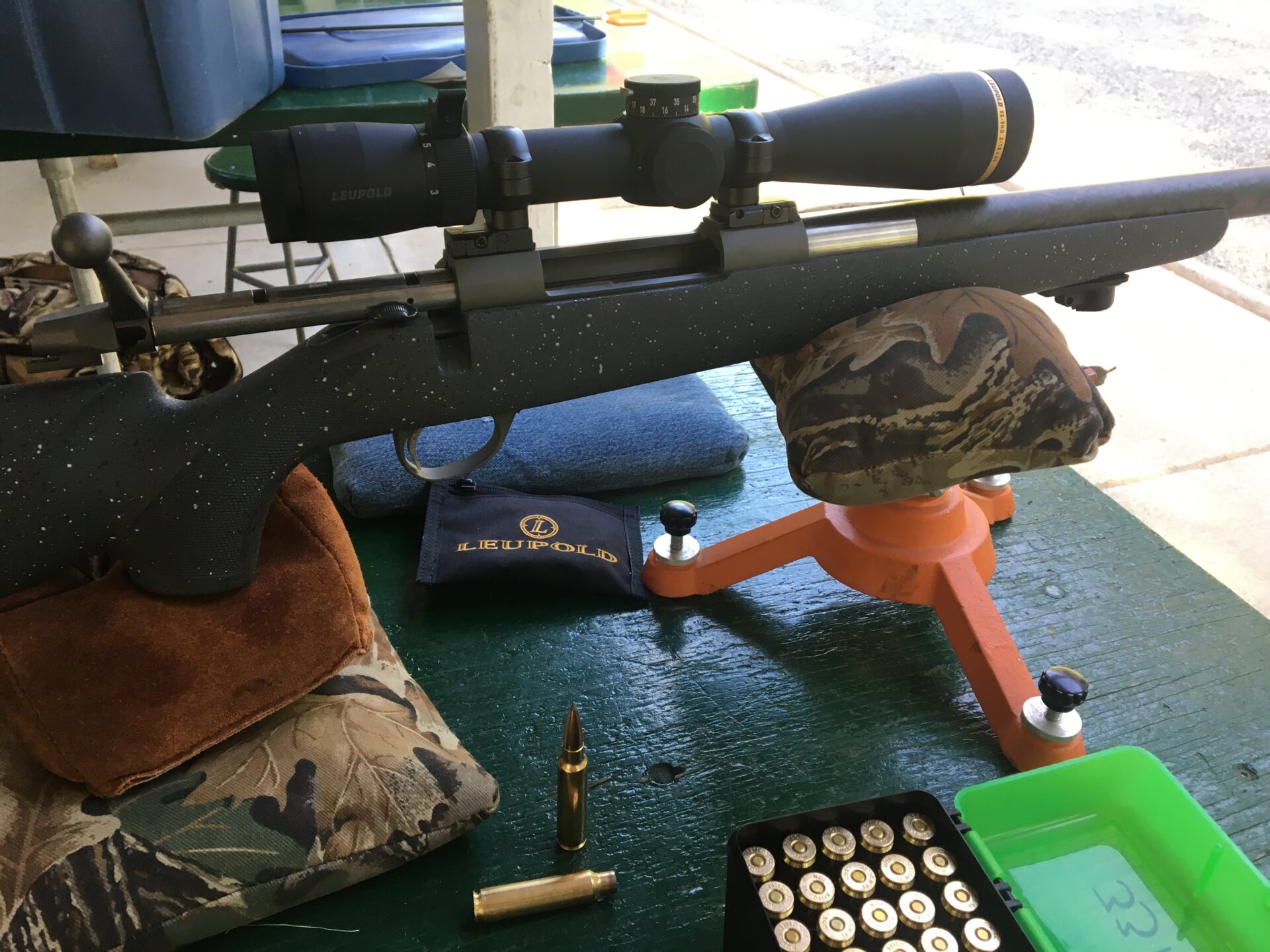The current trend in shooting these days is definitely long-range shooting, and that craze has even crossed into the hunting rifle production. Sales of hunting rifles in cartridges designed for the long-range target sports dominate the current market trends. There is nothing wrong with these cartridges when used in the appropriate applications, but ringing steel at 800 yards is a whole different ball of wax than killing a game animal at the same range.
Advertisement

I am not going go into the ethical debate of long-range hunting; all I will say is that there is a vast difference from long-range target shooting to long-range hunting. Everyone should set their effective ranges based upon their own skills and ethics. In this column, I’m going to point out how just one variable, velocity, can greatly affect the trajectory at extended ranges. There are exceptions to every rule, and I’m not trying to tear anyone down or criticize anyone, I just want to point out how it may lead to missed targets/game, or worse, wounded game.
To oversimplify the long-range game, you need bullets to fly the same every shot. This would be based on the same velocity and bullets that are exactly the same. Many quality bullet manufacturers have that covered for us, but getting the bullets to leave the muzzle at the same velocity every time is the tricky part. The farther the intended range, the greater the difference in the point of impact will be. This will be the same in rimfire bench rest shooting to large bore centerfire rifles and even the shotgun shooter, where differences in velocity may affect the required lead to break a target or down winged game. Consistency is the key. The long-range rifleman also has to contend with all the atmospheric conditions that also have a huge effect down range.
Advertisement
Factory-loaded ammunition has made great strides in the past few decades, but it may surprise many how different it can be shot to shot. Ammunition that produces a difference less than 50 feet per second is decent, ammunition that keeps the spread less than 25 feet per second is very good, and better than that is not always attained without reloading. Unless you spend the time and money chronographing factory ammunition in your rifle, you would never be aware of these differences. I have chronographed countless examples of various rifle ammunition and have been shocked by some of the results. Unfortunately, I didn’t record all of my shots, but my notes did include an example of 128 feet per second difference in one factory ammunition. I will use this spread in my example. In my handloads, I have several shot strings that are in the low single digits; these, as well, are not the norm, but with several records showing spreads of seven to nine feet per second, I will use this as the example as well. I’m trying to be fair. I am going to push the ranges well beyond ranges that I personally feel comfortable shooting at game. The only reason that I will run these beyond that is that I have heard other hunters claim to take game at these ranges. Also, at these ranges the velocity has often dropped below the required speed to ensure adequate bullet performance, expansion and penetration; once again, I’m just using the ranges for illustration purposes.
To calculate this example, I simply plugged the variables into a standard ballistics calculator, and for this example I am going to assume the chosen calculator is correct. I left all the variable input on the calculator at the factory defaults, all things being equal, this is it. I picked a 270 Winchester shooting a 140-grain bullet, zeroed at 200 yards, the published velocity is the base for this, the spread of plus-nine feet per second and the -128 feet per second is based on actual chronographed results, but compiled into one to illustrate this example. Keep in mind there are no atmospheric conditions or shooter error entered into this at this point. I just want to show how much the variances in velocities can dramatically change things.
Advertisement
| Velocity | 400 yards | 600 yards | 800 yards | 1,000 yards |
| 2,940 – published | -19.8 | -68.2 | -155.7 | -297.3 |
| 2,949 feet per second | -19.7 | -67.8 | -154.6 | -295.2 |
| 2,812 feet per second extreme | -21.9 (2.1 inches) |
-75.5 (6.8 inches) |
-172.5 (16.8 inches) |
-330 (32.7 inches) |
You can see the small deviation in velocity results in about two inches of difference at extended ranges, but the extreme spread of 128 feet per second has a dramatic difference. Whether you are shooting at game or targets at 600 yards, the drift starts to push the boundaries of hit/miss or kill/wound, and this even isn’t factoring in human error and other uncontrolled variables.
Long-range shooting can be a rewarding activity, it is lots of fun and can build confidence. I have successfully shot well beyond the 1,000-yard mark by a wide margin on the target range, which is well beyond my hunting range. However, with one’s experience shooting out to that distance on the range, it sure gives the confidence needed to make shots within my personal hunting range.
Whether you hunt or just target shoot, use factory ammunition or load your own, you can see how important consistent, repeatable ammunition is. Not all ammunition is created equal. Shoot safe, hunt ethically.